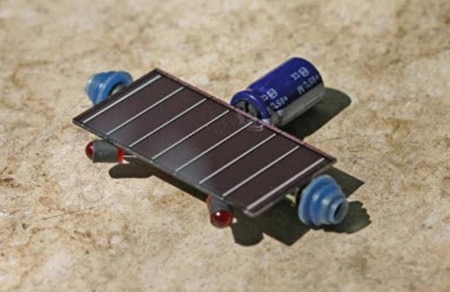What are BEAM Bots?
2019-07-15 | By Maker.io Staff
Robotics With and Without Microcontrollers
Microcontrollers, such as those that power the Arduino range of boards, have revolutionized the electronics industry for both consumers and makers alike. Before microcontrollers were a thing, circuits would need to be designed with discrete circuits and many ICs. For example, a robotic system in the past would need to have a custom computer that would consist of the processor, memory banks, I/O controllers, etc., and all of this would take up precious space. Many applications, however, would completely forgo the use of a computing device and design their entire application from scratch using logic gates and analog circuitry. While not particularly common anymore, such circuitry can be used to control heating systems, automate lights in a building, control windscreen wipers, and much more. Despite being more complex, it can be argued that learning about glue logic and building circuits from scratch helps engineers learn about the practical limits of electronics.
Nowadays, designers can simply get an Arduino or PIC chips and describe the behavior of their system in computer code that the microcontroller runs. But it turns out there is an area of robotics that is concerned with not using microcontrollers to create automated robotic systems, and this is where BEAM robotics comes in!
Definitions of BEAM Bots
There are several definitions of BEAM we can look at:
- Biology Electronics Aesthetics and Mechanics (the most popular definition)
- Biotechnology Ethology Analogy Morphology
- Building Evolution Anarchy Modularity
At their core, BEAM robots are robotic systems that do not use a microcontroller or computer to perform their function. Just like basic organisms, BEAM systems replicate trivial neural connections with sensors sending signals to other parts of the robot to be further processed. Because of the lack of a microcontroller, they are often used to perform very basic tasks, and these tasks often involve the robot moving towards or away from a stimuli source:
- Phototropes
- Photophiles – Move towards a source of light (the most common use)
- Photophobes – Move away from a source of light
- Audiotropes
- Audiophiles – Move towards a source of sound
- Audiophobes – Move away from a source of sound
- Radiotropes
- Radiophiles – Move towards a source of RF
- Radiophobes – Move away from a source of RF
Another common characteristic of BEAM robots is that they do not use pre-charged batteries as a power source but instead rely on their environment to provide them with power. One of the most common sources of power is solar, with small solar cells often acting as both detectors and power sources simultaneously. The way that BEAM robots move depends on the design, with some using multiple motors to enable the robot to move towards a specific location, depending on external stimuli, while others may perform random movements (such as random jumping and rotating limbs). Others may spend their day charging and then illuminate during the night and perform light shows.
Example of a simple photophile robot that follows light:

http://www.smfr.org/robots/robot_images/flatbot.jpg






